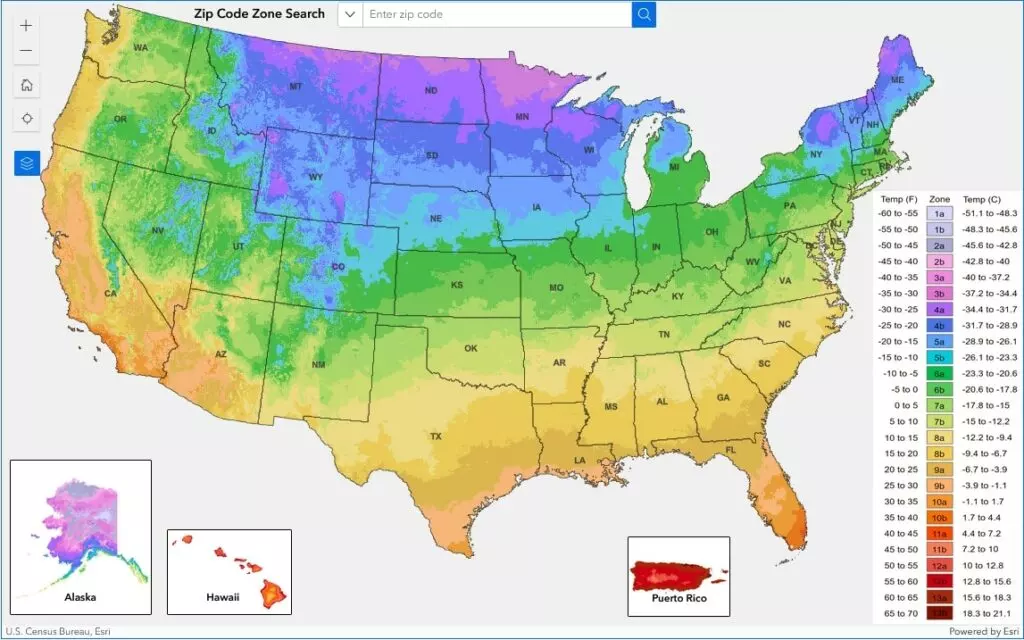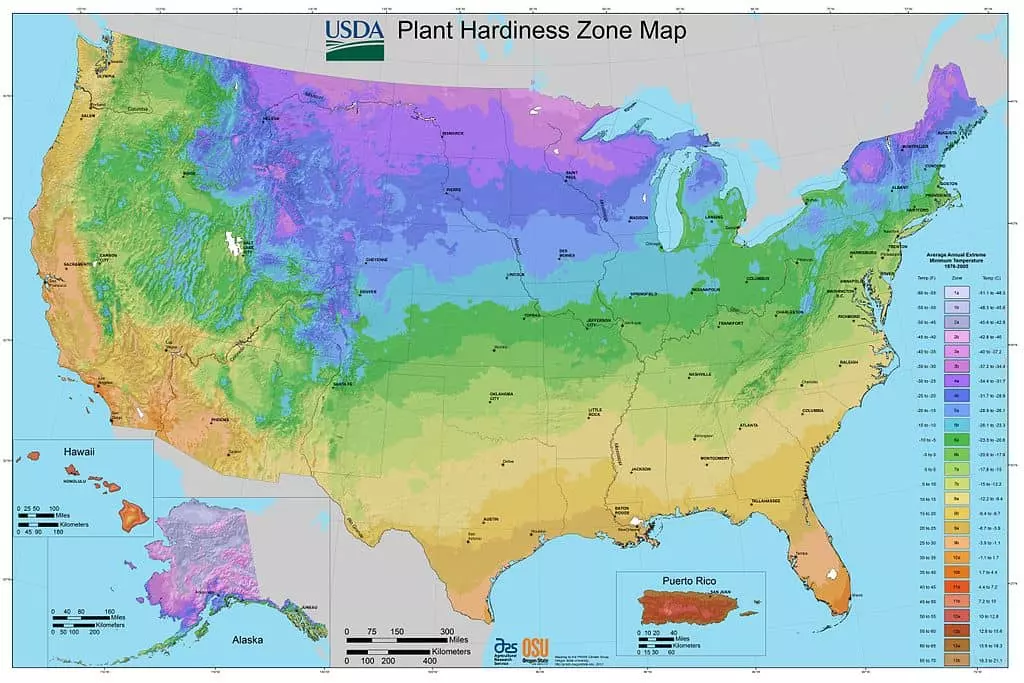The USDA released a new Plant Hardiness Zone Map (PHZM) in 2023, the first update since 2012. The map helps gardeners and growers determine which plants are most likely to thrive in a location. It was developed jointly by the USDA Agricultural Research Service (ARS) and Oregon State University’s PRISM Climate Group. Let’s see what has changed in this new 2023 USDA plant hardiness zones map.
Table of Contents
What Updates Does the 2023 USDA Plant Hardiness Zone Map Have?
The new 2023 USDA plant hardiness zone map has significant improvements over the 2012 version. Below is a summary of the main changes you will see in the new map.
- The new map is more accurate and detailed than prior versions.
- The plant hardiness zone designated for your area could be different in the new 2023 map compared to the previous 2012 map.
- The 2023 map uses data from 13,412 weather stations, up from 7,983 in 2012.
- It has a more detailed resolution for Alaska.
- About half the country shifted to the next warmer half zone compared to 2012.
- The 2023 map uses temperature data from 1991-2020.
- Alaska appears warmer due to using more data from mountain regions.
- Some zone changes are due to more sophisticated mapping methods and weather stations.
The temperature changes don’t necessarily reflect climate change trends, which look at long-term average temps.
Interactive USDA Hardiness Zone Map 2023 by Zip Code
At The Garden Style, we have developed an application that allows you to easily obtain your USDA Hardiness Zone 2023 using the zip code of your location. By entering the zip code and clicking the “Get USDA Info” button, you will receive information on the hardiness zone and the temperature range in Fahrenheit.
USDA Plant Hardiness Zone Map, 2023. Data was created by the Agricultural Research Service, U.S. Department of Agriculture, and the PRISM Climate Group at Oregon State University
USDA Hardiness Zone Map 2023 PDF
Are you looking for the USDA hardiness zone map 2023 pdf? You can go to the source and download the pdf by following the link.
For the first time, the new and updated USDA Hardiness Zones 2023 won’t be available for purchase in paper form, and only digital will be available.
Comparing 2023 vs 2012 USDA Plant Hardiness Zone Map: What is Changed?
In the world of gardening and agriculture, understanding plant hardiness zones is crucial. These zones delineate areas based on their climate, and help determine which plants are likely to thrive in different regions.
As we delve into the comparison between the 2023 and 2012 USDA Plant Hardiness Zones, it is evident how climate change impacts our environment and the vegetation that sustains it. Below, we present two maps side by side for readers to discern the differences and explore the transformations that have occurred over the years.
2023 USDA Plant Hardiness Zones

2012 USDA Plant Hardiness Zones

The disparity between these two maps is striking, highlighting significant alterations in temperature and climate across various regions. Here are some key points to consider when analyzing these maps:
Shifts in Zone Boundaries: Comparing the maps side by side, viewers can notice changes in the boundaries of different hardiness zones. Some zones might have expanded or contracted, indicating alterations in average annual minimum temperatures.
Elevated Temperatures: In many areas, there might be a noticeable shift towards higher hardiness zones, indicating warmer temperatures. This trend could influence the types of plants that can thrive in these regions.
Climate Variability: The differences in the zones between 2023 and 2012 signify the variability in climate conditions. It emphasizes the need for gardeners, farmers, and researchers to adapt to these changes and reconsider their plant selection and cultivation strategies.
Implications for Agriculture and Gardening: Understanding these changes is vital for farmers and gardeners. It helps them choose appropriate plant species that can adapt to the evolving climate conditions in their respective regions.
What Elements Remained the Same in This Latest Plant Zones Update?
The overall structure of the plant hardiness zones did not change in the 2023 update. There are still 13 main zones across the U.S., which are further divided into “a” and “b” half zones to provide more localized temperature information.
The temperature range defining each zone remains the same, based on 10-degree Fahrenheit increments. The interactive online map allows users to zoom into their specific location and see the designated hardiness zone, revealing some small pockets of variation.
The zones continue to represent a location’s extreme minimum winter temperature averaged over 30 years. Temperatures can occasionally drop below the average zone rating, though that is not typical.

